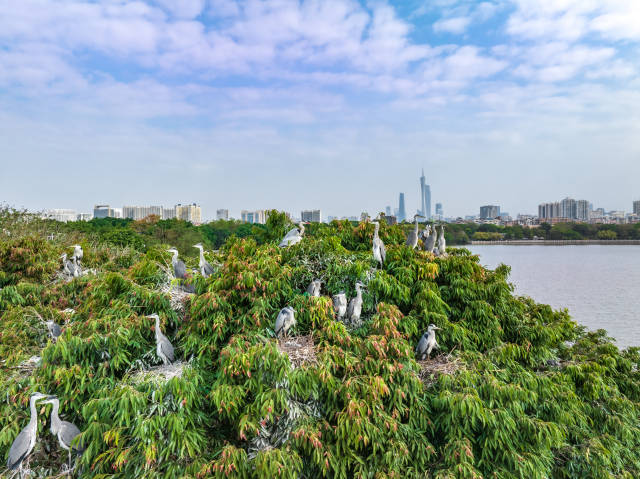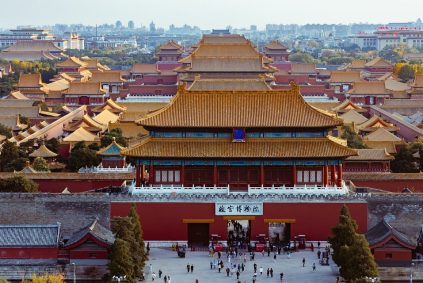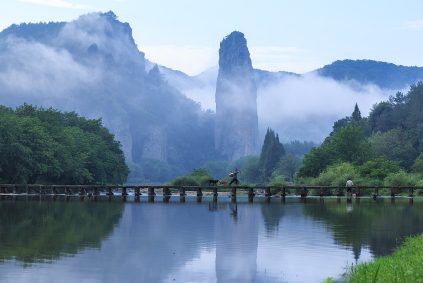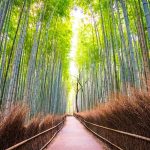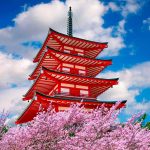Guangzhou Haizhu Wetland, as a key node of the East Asia-Australasia migratory bird passage, is a bird-watching paradise in the city center. Here are five core bird-watching spots and practical tips recommended:
Primeiro, the five core bird-watching spots
Yanlaiqi Bird-Watching Boardwalk (by Haizhu Lake)
Feature: A plank road integrating science popularization, bird watching and leisure, with lush grass and flowers on both sides, it is hailed as one of the best bird-watching spots in Guangzhou.
Birds: You can closely observe waterfowls such as egrets, herons and black waterfowl. The plank road is equipped with binoculars and is suitable for family and children’s activities.
Fulujing (Wetland Phase II High Tide Habitat)
Feature: A 13-meter-tall bird-watching tower offers a panoramic view of the wetland with an expansive view.
Birds: Common wading birds such as the Mallard and the green-winged duck are suitable for photography enthusiasts to capture the movement of birds.
He Liu Jin (Habitat of the Second Phase High Tide of the Wetland)
Features: Daily tidal changes. When the tide goes out, the riverbed is rich in food, attracting many small birds to forage.
Birds: It is suitable for observing wetland birds such as egrets, plovers and sandpipers. The best time for bird watching is during low tide.
He Qi Ze (near the South Gate Floating Bridge)
Features: Vast water areas and high ecological diversity.
Birds: Common waterfowls such as mallards, egrets and night herons inhabit here, making it suitable for taking group portraits of birds.
Yan Yu Tan (East of the South Gate of Phase II)
Feature: The plank road leads directly to the bird-watching tower, and along the way, there are bird science popularization boards, which serve both educational and sightseeing purposes.
Birds: You can observe distinctive birds such as ruddy shelds and common cormorants, making it an ideal place for nature education experiences.
Segundo, practical tips for bird watching
The best season and time
Season: Primavera e outono (March to June, Setembro a novembro) are the peak periods for migratory birds. In winter (December to February), resident birds can be observed.
Time periods: Early morning (6:00-9:00) and evening (16:00-18:00) when birds are active frequently, it is suitable for bird watching.
Transportation Guide
Take Metro Line 3 to Datang Station Exit B, then walk for 10 minutes to reach the entrance of Haizhu Lake directly.
By car: Navigate to “North Gate Parking Lot of Haizhu National Wetland Park, Cantão”. It is recommended to arrive one hour in advance during holidays.
Equipment suggestions
Telescopes: 8×42 or 10×42 binoculars are recommended, which are suitable for observing the details of waterfowl.
Photography equipment: telephoto lens (400mm or above), tripod, polarizing filter (to reduce water surface reflection).
Clothing: Wear clothes in natural colors such as gray, black, blue and green to avoid disturbing the birds.
Precauções
Civilized bird watching: Keep a distance of more than 50 metros, do not feed, do not drive away, and do not use flashlights.
Safety Warning: Some areas of the wetland are deep and it is prohibited to wade through the water for bird watching. Pay attention to preventing mosquito bites in summer.
Ecological protection: Do not collect bird eggs, do not damage habitats, and take garbage with you.
Terceiro, the ecological highlights of Haizhu Wetland
Biodiversity
Birds: A total of 202 species of birds have been recorded, including the black-faced spoonbill and the white-faced spoonbill, which are second-class protected animals in China.
Plants: Há 835 species of vascular plants, including water pine, water fern and other key protected plants of the state.
Ecological restoration achievements
Habitat creation: By means of gradient spatial layout, water level regulation and other technologies, diverse habitats such as rice fields, shallows and bare highlands are constructed.
Migratory Bird Station: It attracts over 100,000 migratory birds to rest every year and serves as a breeding ground for birds such as herons and great egrets.
Special experience
Egret Island: The only breeding ground for wild herons in the center of Guangzhou, where herons can be observed raising their young in spring.
Ecological floating island: Designed along the steep edge of the shore, it provides a “self-service restaurant” for waterfowl to rest and forage.

